It is impossible to know exactly what the future may hold, but if you want to be as ready as possible for a potential emergency, growing your own food is one of the most useful things you can do.

We link to vendors to help you find relevant products. If you buy from one of our links, we may earn a commission.
And cultivating a survival garden is not just about preparing for the worst. Growing enough food for your family has many wonderful benefits.
It provides year-round nourishing sustenance, while also supporting pollinators, reducing your carbon footprint, and building a connection to your food source, to name a few.
Continue reading to learn how to get started with growing a survival garden.
What You’ll Learn
What Is a Survival Garden?
What is a survival garden? In simple terms, it’s a garden that is productive enough to feed your family.
Growing a survival garden requires many of the same practices as growing any vegetable garden, except in this case you are ideally growing enough food to survive without outside sustenance if necessary, as well as taking extra consideration for things like calories and nutrition, ecological health, seed saving, and food preservation.
Why Should You Grow a Survival Garden?
There are many benefits to growing a survival garden.
As the term “survival” in the name implies, one major benefit is the peace of mind that comes with having food that’s always available in case of storms or other emergencies that may hinder access to outside food.
If you have the time and capacity to do so, growing a secure supply of healthy food is just good sense.
But even if you don’t want to be bothered with preparing for the worst, there are still many reasons why growing a survival garden is a good idea.
Let’s explore some of these.
Eat Garden-Fresh Every Day
Growing your own food is an incredibly rewarding task. Imagine the joy that comes from cooking and eating only the absolute freshest ingredients that were grown and harvested by your own love and labor.
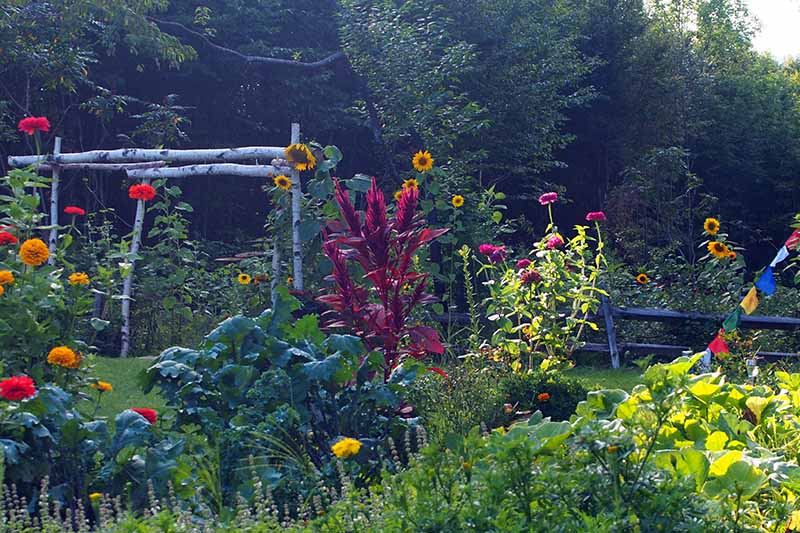
Each and every meal can be healthy, nourishing, and absolutely delicious – not to mention, you won’t have to worry about pesticide residue or other unknown chemicals in your food.
Connect Your Kids to Their Food Source
This is also a wonderful learning tool for families. Growing your own food is an excellent hands-on way to teach your kids where it all comes from.
Creating a survival garden together as a family can help you to create a powerful and deep connection to your food source and the earth.
Reduce Your Environmental Footprint
Growing your own food helps the environment in a number or ways. It supports pollinators and other wildlife, reduces erosion, builds healthy soil, reduces waste, and decreases carbon emissions.

To really be a net positive for the environment, be sure to follow organic practices and learn about techniques such as permaculture that focus on designing minimal-impact landscapes that mimic the natural environment.
Share the Abundance
If your garden ends up being incredibly successful, you can sell, barter, or share the excess to help support the project and your family.
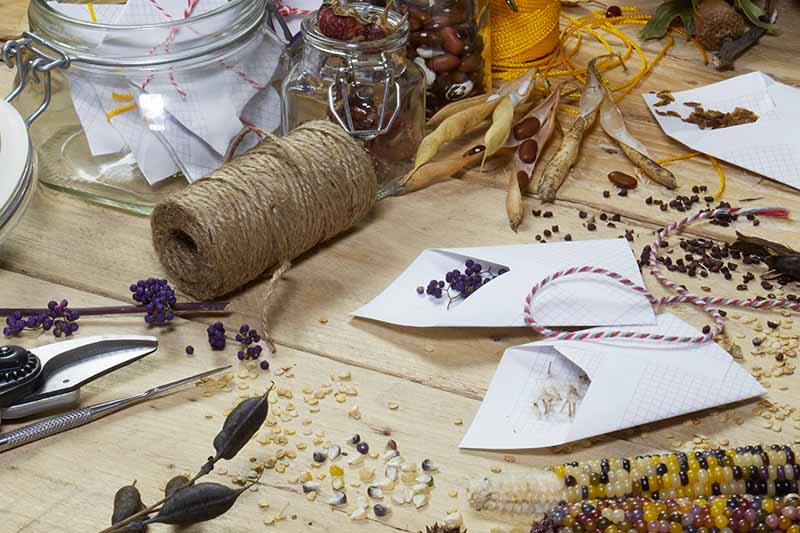
For instance, If you are saving seeds each year, why not save a few extra for friends and neighbors?
This also helps to prevent waste, if you’re bringing in a bumper crop.
Set Attainable Goals
Before you start digging up your yard, there are some initial steps you should take to ensure success.
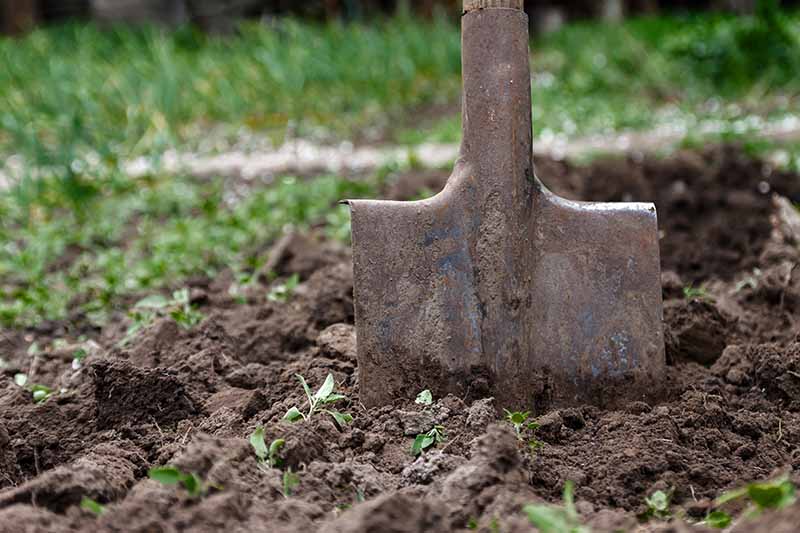
First, it is important to determine your goals. Do you want 100 percent of your produce to come from your land, or are you aiming for closer to 50 percent?
It is best to set attainable goals and then work upward. If you are a beginning gardener, it might be unrealistic to try to grow most or all of your food in the first year.
When setting goals, also consider how much time you have to devote to the project, and what resources you can allocate.
If you are new to vegetable gardening, check out our guide for beginners first.
Do Your Research
Next, do your research to meet the goals you’ve set! Read up on organic gardening, food preservation, and seed saving. Take a class or talk with the experts at your local agricultural extension office.
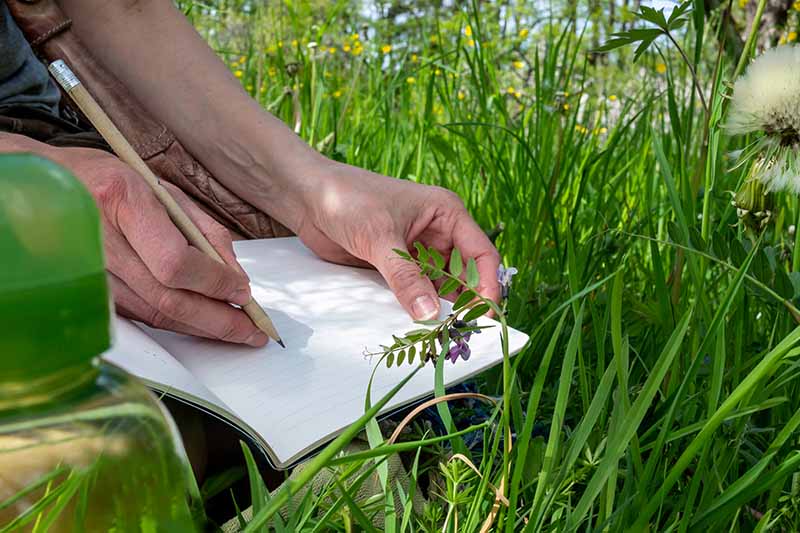
Another highly useful thing to do before getting started is to talk to friends and neighbors who are gardeners, or who might be interested in starting their own similar project with their own plot.
In addition to gleaning relevant information about what works well in your climate, you may find interesting opportunities for collaboration.
If your neighbor has apple trees in their yard, why not plant a cherry tree and share the yields from both? There’s no need to grow it all yourself!
Determine Size and Location
Once you have some research under your belt, it’s time to get to work on designing and laying out your garden.
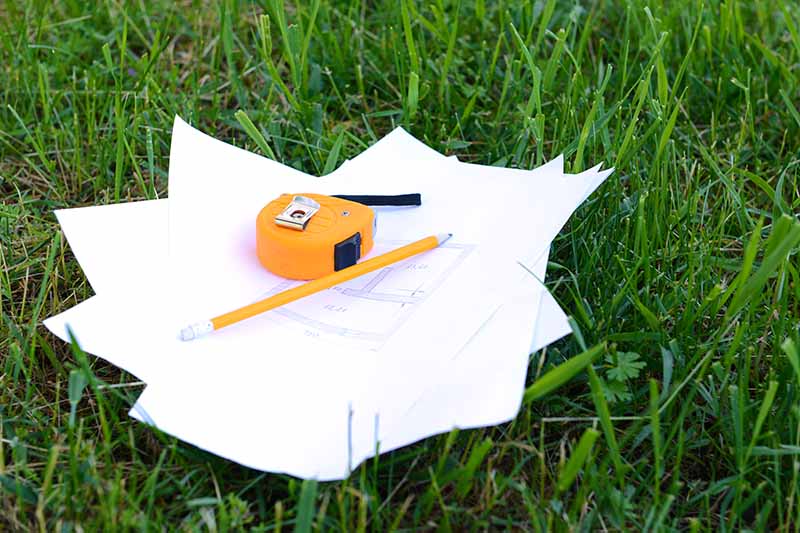
Start by determining the size you want your garden to be. You will need a fairly sizable area to feed your whole family without having to supplement.
It takes a significant amount of calories and nutrients to maintain a balanced and healthy diet for an entire family.
The exact amount of space you need will vary depending on your family size, caloric needs, and food preferences.
A survival garden will typically require somewhere between a quarter of an acre to two acres of land to sustain a family of four.
Other factors like the amount of time you have to commit, the types of crops you plan to grow, and the length of your growing season can impact the amount of space you need.
Start by talking with your family about their daily food intake and preferences. What do you enjoy cooking and eating? What type and quantity of produce do you typically buy and consume each week?
Next, consider how much time you have to devote to growing your food. It is easy to get carried away, but don’t forget that growing food takes work!
Take into account time allotted for planning, planting, weeding, harvesting, and preserving your homegrown food. It doesn’t make sense to plan a two-acre garden if you only have a couple hours a week to spare.
Start with what you can realistically do. You can always expand your operation later on.

Of course, you also need to take into account the conditions within the space you have available.
Ideally, you will need a large enough location that also has well-draining soil, in an area that receives at least six hours of direct sunlight a day.
If you don’t have acres of open space in your yard, don’t give up. While it may require a bit more creativity, it is certainly possible to grow a lot of produce in compact spaces.
Utilizing techniques such as square foot gardening can help you to grow the most food possible in small spaces.
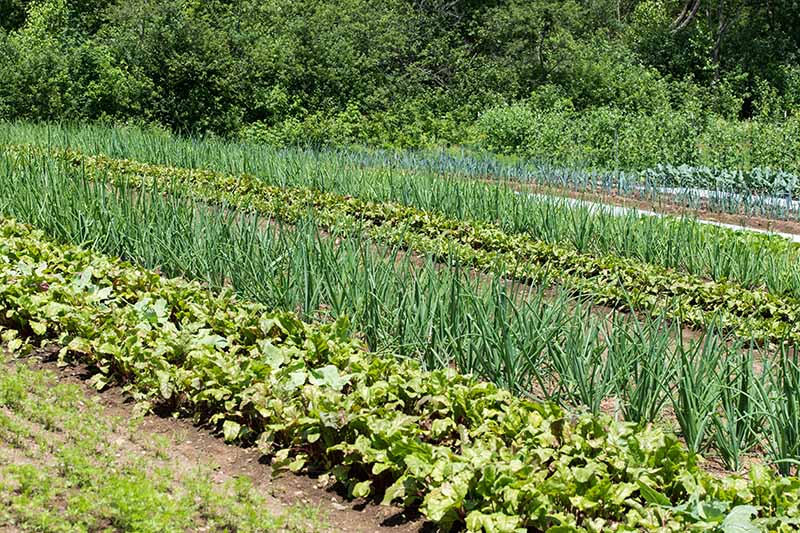
There are many ways to think outside the box. I once knew a gardener who lived on a small urban plot without sufficient area to grow food, so she convinced several of her neighbors to let her garden in their yards.
She ended up with plenty of usable space to grow food and the neighbors also benefited from a continuous supply of free produce – a win-win all around!
There are many online calculators available to help you get started with figuring out the right amount of space for your family, as well as how many plants you will need to produce various amounts of food.
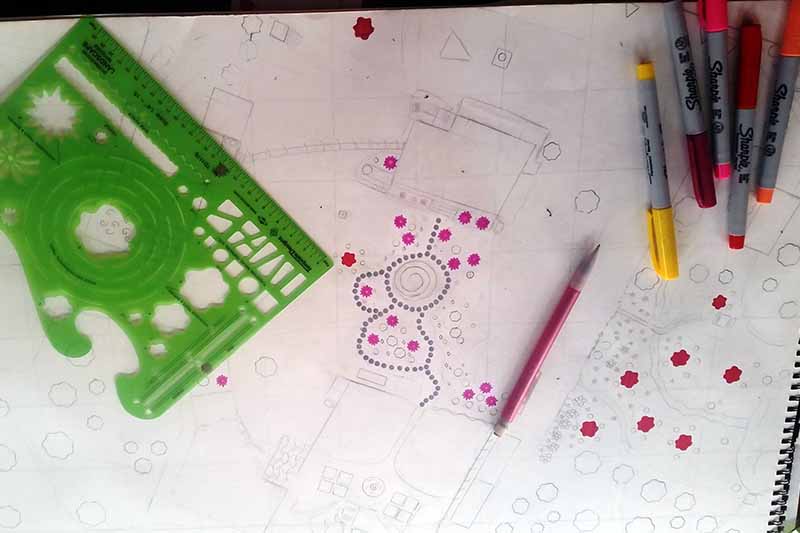
Drawing up a sketch of your layout can also be a great way to visualize your space, and think about what you might grow where.
I also highly recommend creating an annual calendar to record when you should start seeds and transplants as well as when you plan to harvest at various points throughout the year.
Include other “to-do’s” such as pruning perennials, mulching, seed saving, and preserving food.
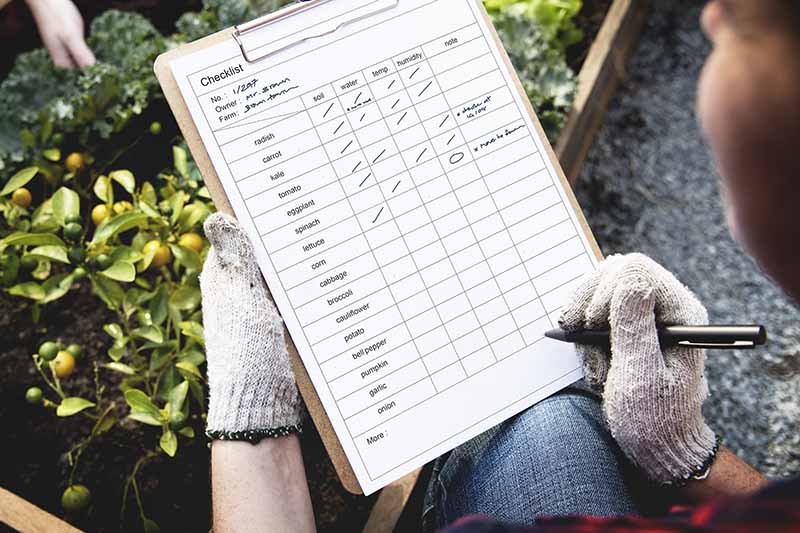
And remember, no matter how much you plan, it may take a few seasons of trial and error to figure out what works best for your family. Be prepared to be adaptable!
Decide What to Grow
The first step in determining what to grow is to make a list of what fresh foods your family enjoys.
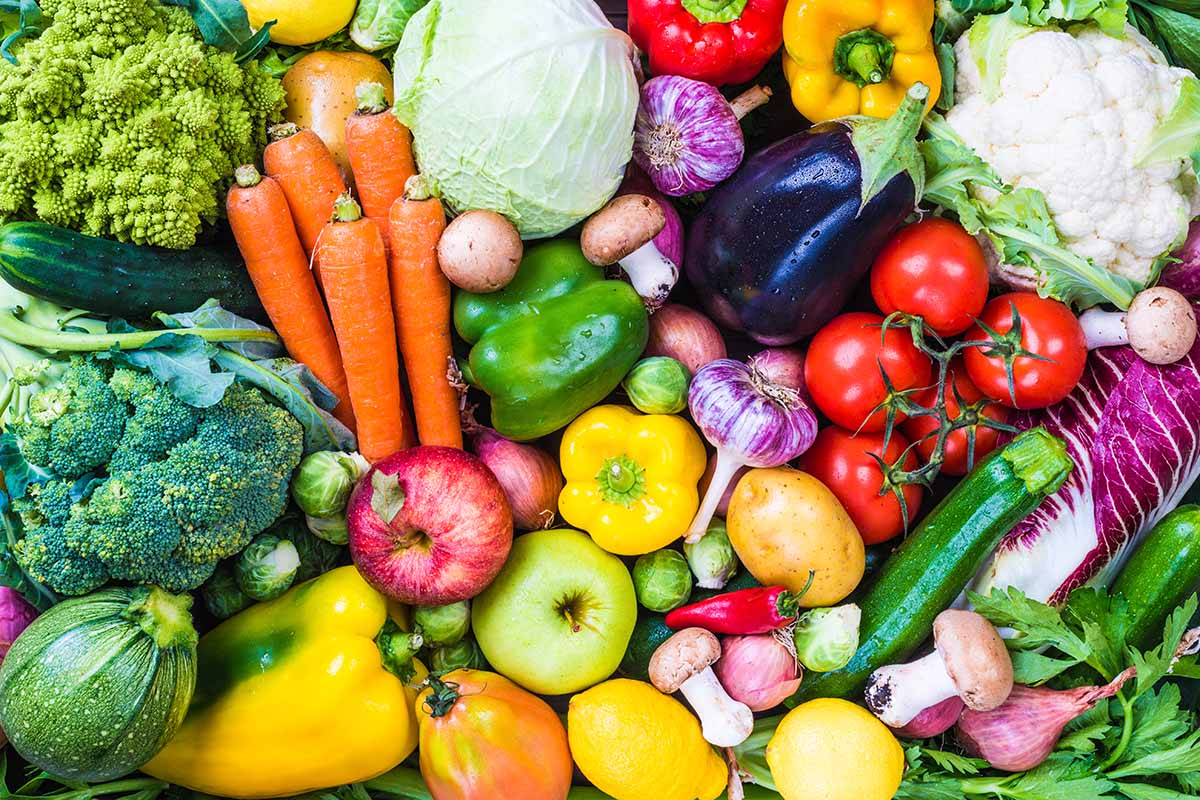
But deciding what to grow in a survival garden is a bit more complex than just picking veggies you enjoy and wish to grow.
While that is certainly important, you also need to maximize calories and nutritional value in the available space, and select crops that can be stored or easily preserved for the long term.
And of course, you also need to consider your climate. Learn about your USDA Hardiness Zone and cross out anything on your list that doesn’t grow well in your climate.
Choose Annuals Wisely
When selecting annuals, be sure to include nutrient-dense crops like potatoes, legumes, corn, sweet potatoes, winter squash, and grains.
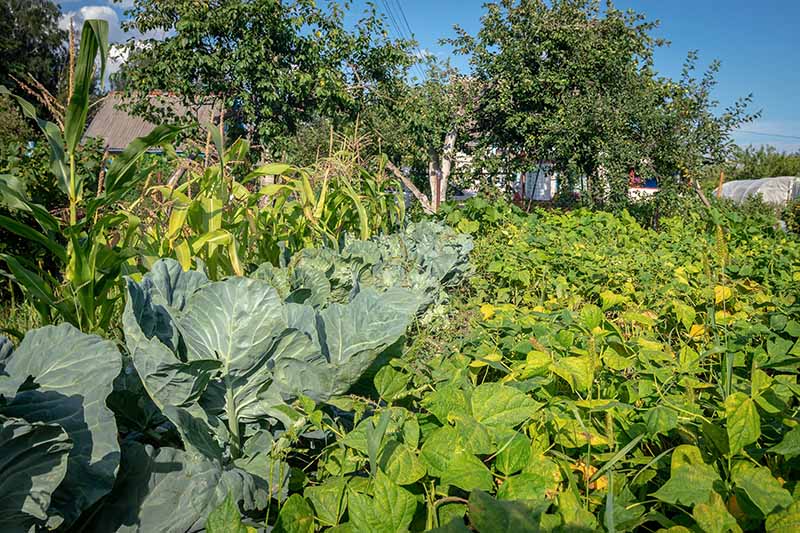
Sunflower seeds provide an easy way to obtain some healthy fats if you are relying on a vegetarian diet. Sunflowers are also beautiful and will help to attract pollinators.
Some veggies that do well in long-term storage include potatoes and sweet potatoes as well as beets, carrots, onions, turnips, leeks, garlic, and rutabagas.
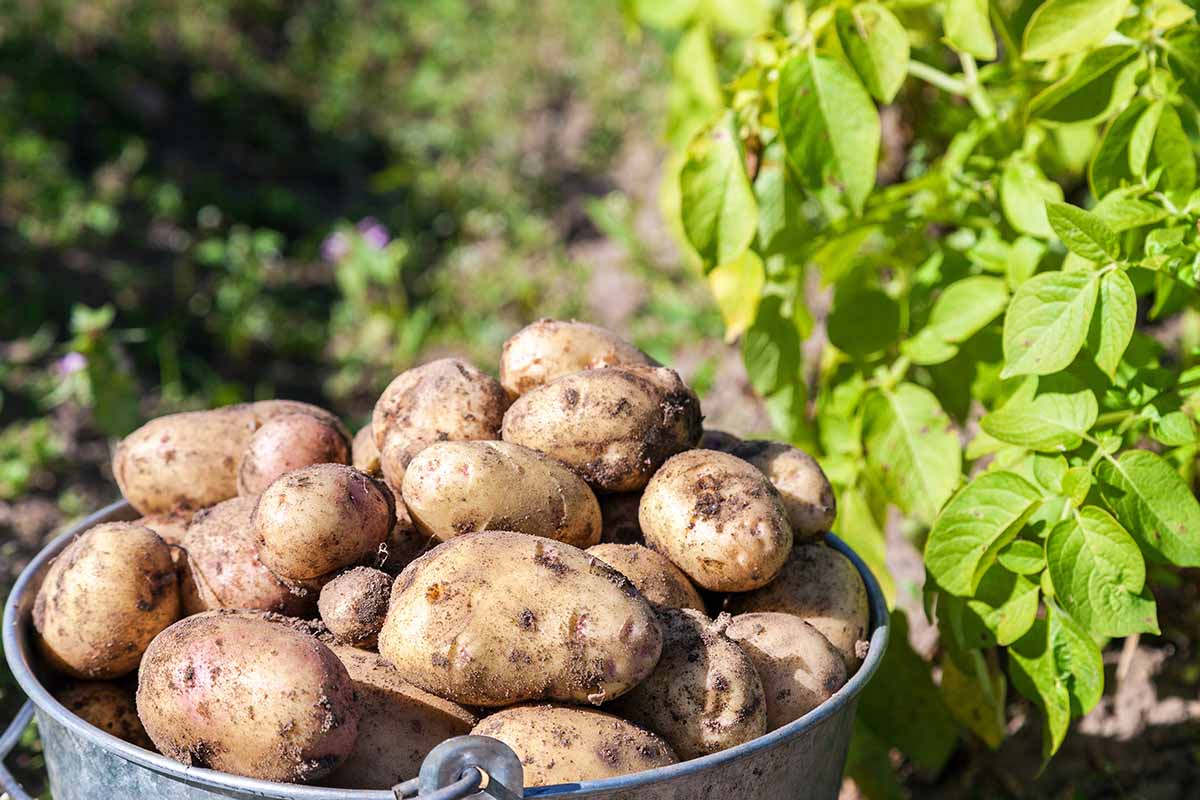
Choose some crops that do well in cold weather to help extend your growing season. Even in cold climates, hardy plants like kale and spinach may survive well into the fall.
And don’t forget about plants that can easily be canned, frozen, fermented, or dried, such as kale as well as tomatoes, peppers, broccoli, and cabbage.
Note as well that some edible crops typically grown as annuals are actually biennials, meaning they produce seeds in their second year of growth.
This is important to keep in mind if you wish to save your own seed, so you can reserve some garden space for crops that will be allowed to flower in the following season rather than being harvested for eating.
Include Perennials Too
In addition to annual veggies, a productive survival garden should also include perennial vegetables as well as herbs, fruit, and nuts.
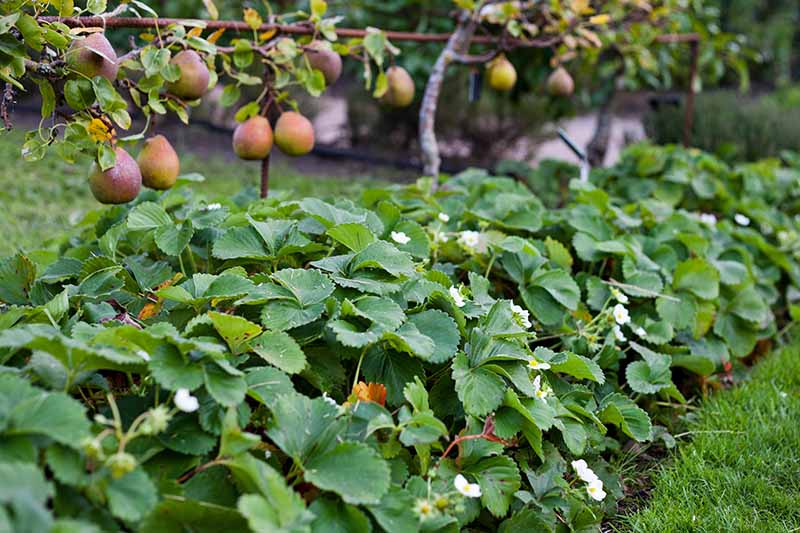
Not only will perennials provide a more diverse range of nutrients, but ideally, these plants will continue to grow larger and become more productive each year, reducing your workload for the same output.
They will also help to create a more balanced ecosystem.
Perennial vegetables that you might like to select include artichokes, asparagus, and rhubarb, while fruit trees, nut trees, berries, and grape vines are all great choices as well, if you have the space.
Include medicinal plants and culinary herbs as well. Herbs tend to require little space, are typically low maintenance, and will also help to attract pollinators.
And in a real survival situation, it would certainly be useful to have some therapeutic plants handy.
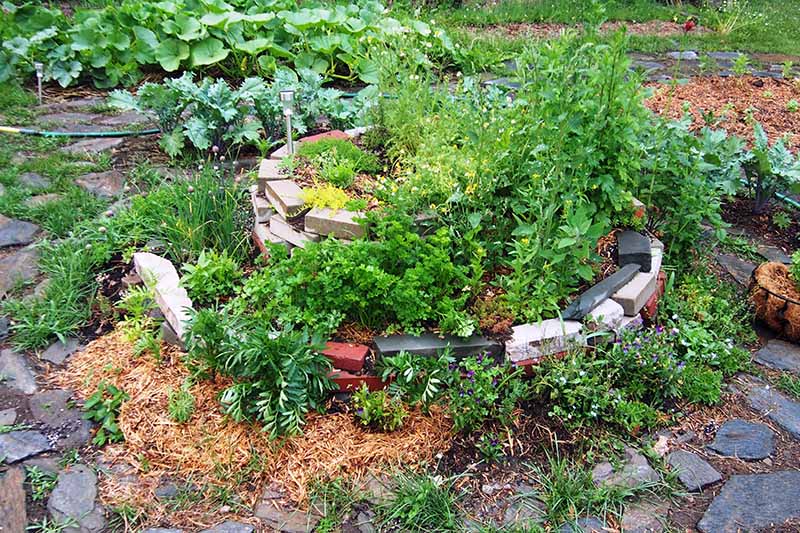
Designing a garden that includes a diversity of perennials can also help to mimic a more natural ecosystem, improving soil quality and drainage, attracting beneficial insects, and reducing pests and disease.
Check out our article on fruit tree guilds to learn how you can grow trees and supporting species together to mimic natural plant communities and improve the health of your garden.
In her book, “Growing Perennial Foods,” available from Chelsea Green Publishing, author Acadia Tucker takes a deep-dive into cultivating edible perennials.
This is an excellent read if you want to learn more about growing resilient plants in your survival garden.
Gather Your Materials and Equipment
Once you have your plan in place, it is time to gather the necessary materials and equipment, and begin buying or collecting seeds.
Now is also the time to think about greenhouse design if you plan to include one.
Building a small greenhouse, hoop house, or even a few cold frames can give you a head start on planting and greatly extend your growing season. If you have the space and resources, I definitely recommend building a greenhouse or hoop house.
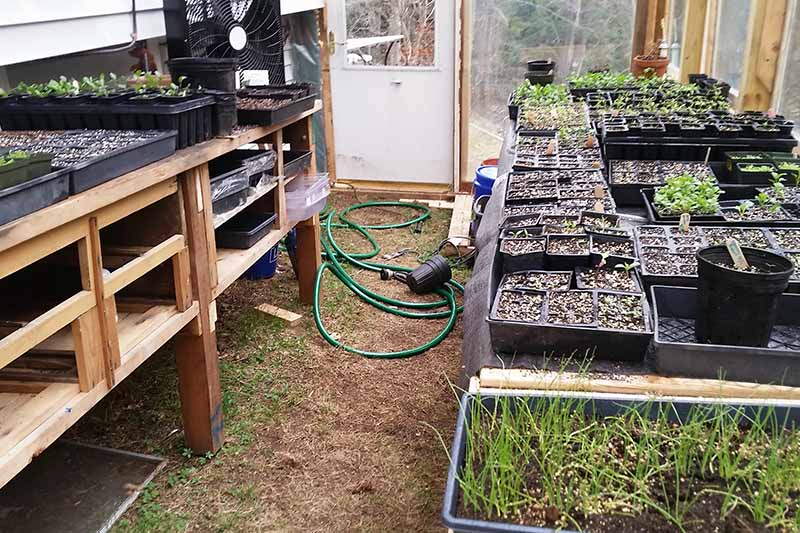
To get started, read our roundup of easy to build DIY greenhouses and cold frames for inspiration.
You will need seed-starting supplies such as containers and potting soil, as well as hand tools such as pitchforks, shovels, pruners, and trowels.
I find buckets, watering cans, and a sturdy wheelbarrow to be essential. This article can help you get started with choosing tools and supplies. You will learn over time what tools are most valuable for you.
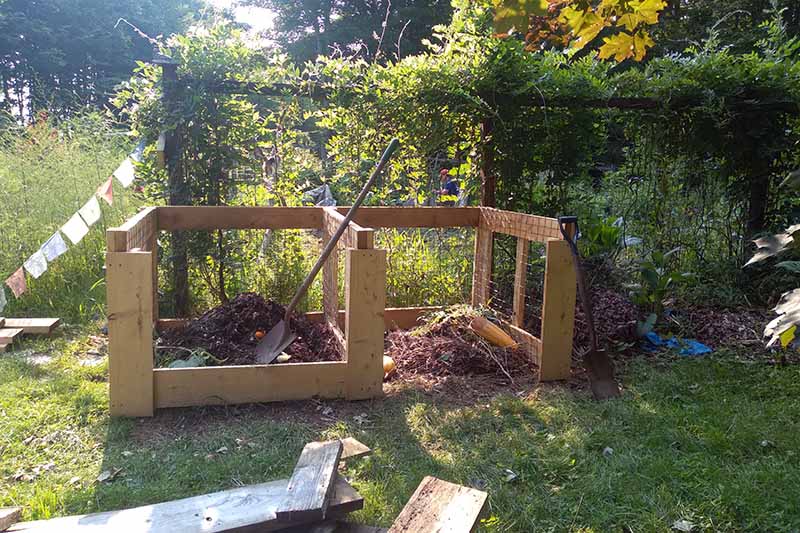
Start your compost pile (if you don’t have one already). Composting is just about the best way to improve your soil health naturally, while simultaneously reducing waste.
You can learn more about composting here.
Take Notes
Once your project is underway, continue to make observations of what works and what doesn’t, so you can make adjustments and future improvements.
Being able to easily go back and see what you did in a previous season, or when the final frost hit in a given year, can help you to plan for the future.
Keep a journal to record the observations you make about your land. I like to chart when I start all of my seeds each year, what my process is, where I plant them, and how they do.
Make note of what works well, and what challenges you come across. Be sure to track weather patterns and make notes of frosts as well as sunlight, wind exposure, and drainage in different parts of your yard.
More to Consider
If you are new to gardening, start small and grow over time. Remember, you don’t have to do everything in the first year – and you probably shouldn’t.
Creating a list of five- or 10-year goals can help you to prioritize, and narrow down the most important elements to think about first.
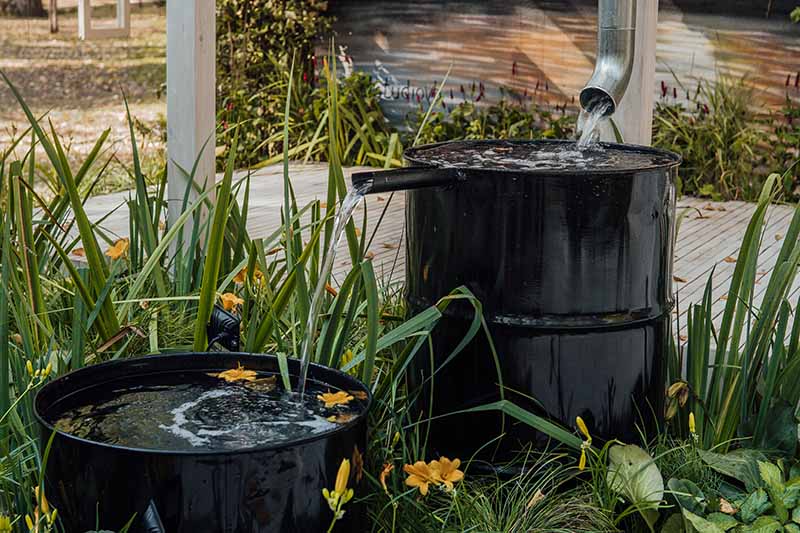
Sustainable irrigation is another important consideration.
Collecting rainwater and using rain barrels to water your plants will ensure the availability of a water source even if something happens to your chief supply. And it’s a great way to reduce your water consumption too.
Over time, you may also wish to consider including animals like chickens or ducks to provide an additional food source as well as other benefits, such as pest control.
Always Have Food on the Table
While you will hopefully never need to rely on your survival garden for its intended purpose – to survive an unexpected calamity – growing one is incredibly worthwhile nonetheless.
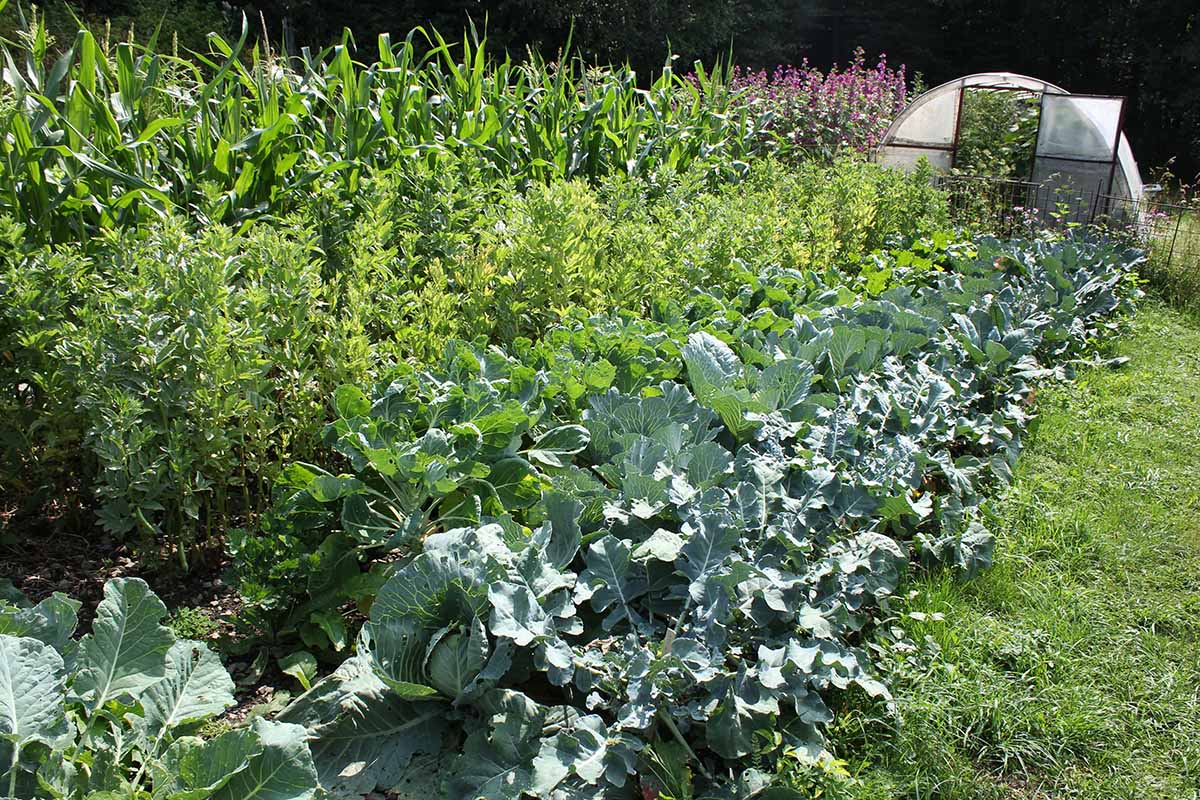
You can feed your family wholesome, fresh food, foster a deep connection to the earth, and help support wildlife and soil health. Furthermore, you can rest easy knowing you will always have food on the table.
Are you interested in growing a survival garden to feed your family? We would love to hear your questions and thoughts in the comments below.
Want to learn more about creating a productive vegetable garden at home? Check out these articles next:
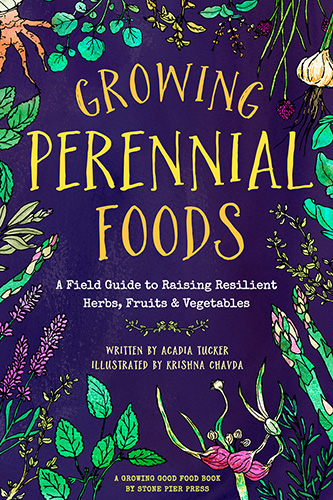

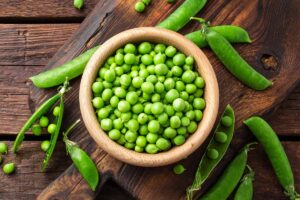
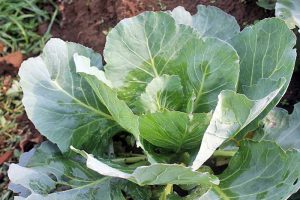
I really want to get started with this. My yards are unfenced and we have a lot of wildlife around, so I have a 10×20 dog pen that I no longer need and plan to do containers inside it. It also has a roof but I’m going to take that down and put up bird netting. I started a worm bin a few months ago and I also have rabbits so I’m going to utilize the manure. 🙂
Hi Allison, this sounds like an excellent use for your unused dog pen. Good luck with your new garden and let us know how it goes!